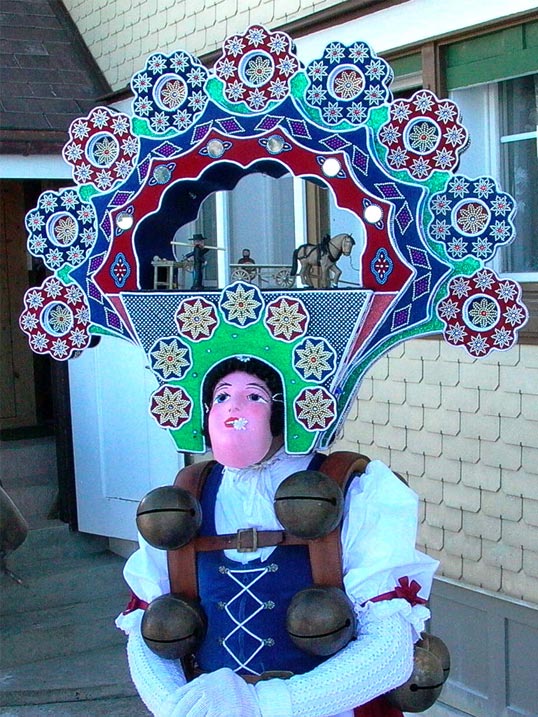
Liminality implies an element of transition, or change. Within liminal festivals there is a sort of celebration of the past and a looking to the future. In many cases this transition is one of either reaching adulthood or death. The relationship between these two elements is a difficult one, and in these Liminal European festivals the relationship is mediated by a mask. The mask is a sacred necessity to these ritual festivals, and is intertwined with the fundamental notions of Halloween as a festival of both death, and the transition into the adult world.
In many European languages the word for mask has a double meaning. Glotz and Oerlemans state that “many words that mean mask also mean apparition, shade, ghost” (1982). The wearer of the mask at these type of festivals is sometimes believed to become “the ancestor, the holy one”. These festivals are often held in the winter at a time when the year is dying. As already mentioned in “Origins in Samhain” this was a “supernaturally charged” time of year when the dead could make their escape. Therefore, within these festivals “giving to children” (dressed in masks, therefore linking them to representations of the dead), “meant settling the score with the ancestor, honoring and satisfying them and sending them safely back to their realm” (Mack 1994). In this case the mask acts as the mediator between the living and the dead. John Mack says in “Masks and the Art of Expression” that “a thin but steady thread links together, across space and time, the mask to the living and the dead, witches and dream-like experiences, ritual violence, the illness induced by malevolent spirits and the cure provided by courageous young men” (Mack 1994). He also points out that there is a “strong correlation between young men, masquerading and the dead”.
Mack’s observation will lead us to our discussion of the transition between adulthood and childhood. A strong connection between young men, prescribed crime, and anonymity has already been discussed elsewhere. Here I would like to show that the reason these irresponsible actions, like crime, must be performed and young men must mask themselves and dispose of their identity for a few days through masking is to explore the possibilities of becoming “the other” before those possibilities close up for good and they are forced to assume their place as an adult male of the society. Many of the costumes associated with these festivals have both female and male elements, letting the youth explore “the other” in femininity. For example, in northern Italy young men, “especially the unmarried” are called to play the leading roles in masquerade. In the Bahio festival of Italy the asexual masks “conform to the transitional and initiatory status of masks in many European traditions” (Mack 1994).
These festivals are a good comparison for our Halloween, which is indeed a festival of transition and change.
Back to HALLOWEEN
